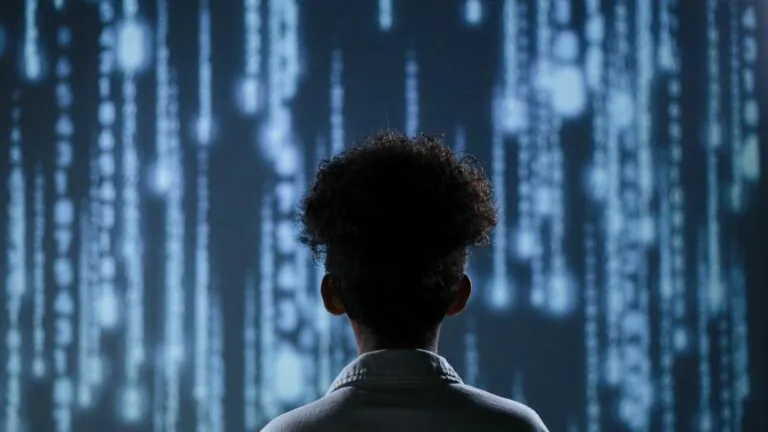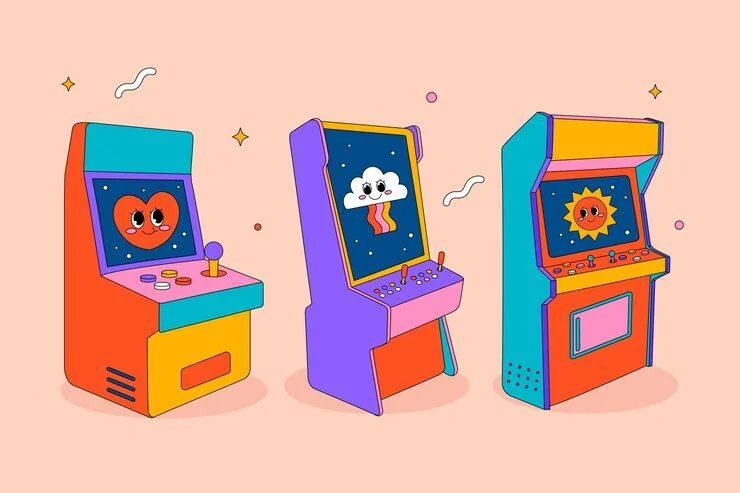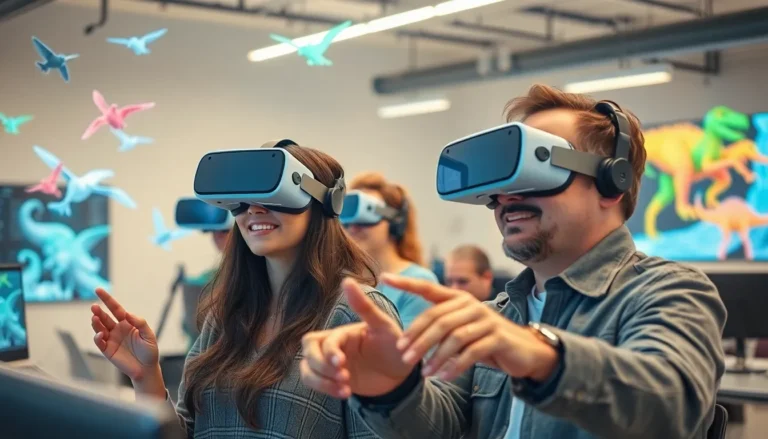Imagine rocking out to your favorite band while lounging in your pajamas, popcorn in hand, and zero fear of losing your voice from singing too loudly. Welcome to the world of VR concerts, where the front row is just a headset away. This innovative technology is transforming how fans experience live music, allowing them to dive into immersive performances without the hassle of traffic or overpriced drinks.
As the music industry evolves, VR concerts are becoming the new norm, blending entertainment with cutting-edge tech. Whether it’s dancing with avatars or feeling the bass thump in your chest, these virtual events offer a unique thrill that traditional concerts can’t match. So, grab your headset and get ready to experience a concert like never before—because who wouldn’t want to jam out with their favorite artists from the comfort of their couch?
Table of Contents
ToggleOverview of VR Concerts
VR concerts offer an innovative approach to experiencing live music. Through the use of virtual reality technology, fans engage in immersive performances that transcend traditional concert settings. Attendees can feel as if they’re in the front row, surrounded by their favorite artists, all from their homes.
The technology behind VR concerts enhances the live music experience. Artists can perform in an array of virtual environments, ranging from iconic venues to fantastical settings. Graphics and sound quality create an engaging atmosphere that enhances the overall performance.
Accessibility plays a significant role in the appeal of VR concerts. Fans no longer face barriers such as traveling long distances or dealing with sold-out shows. Instead, those who may have difficulty attending live events due to geographical or physical constraints can enjoy performances in a virtual setting.
Cost-effectiveness also benefits both artists and fans. Performing in a virtual space can reduce production costs associated with physical venues, leading to more affordable tickets. This financial factor encourages wider participation, allowing more fans to enjoy concerts.
Underlining the popularity of VR concerts, a significant number of artists have embraced this format. Major performers often host virtual shows, reaching global audiences. Statistics from 2023 indicate substantial growth in attendance at VR concerts, highlighting the increasing trend within the music industry.
Overall, VR concerts redefine how music lovers experience live performances, providing an exciting alternative that combines technology with entertainment.
The Technology Behind VR Concerts

VR concerts rely on advanced technology to provide immersive experiences. Key components include virtual reality headsets and sophisticated live streaming technologies.
Virtual Reality Headsets
Virtual reality headsets create immersive environments for concerts. These headsets allow users to experience highly realistic visuals and spatial audio. Popular models include the Oculus Quest 2 and Valve Index, providing varying levels of quality and comfort. With features like 360-degree views and motion tracking, users feel as if they’re in the front row of a live performance. Improved graphics enhance the experience, making virtual environments engaging and dynamic.
Live Streaming Technologies
Live streaming technologies play a crucial role in connecting artists and audiences. High-bandwidth internet connections ensure minimal lag and optimal video quality. Platforms like Twitch and YouTube offer dedicated services for streaming live events. Innovations such as 360-degree cameras provide additional depth, allowing fans to look around during performances. Streaming solutions must support high-resolution formats and adaptive bitrate streaming for smooth playback. Enhanced interactive features, like real-time chat, foster community engagement among fans, making virtual concerts feel interactive and vibrant.
Advantages of VR Concerts
VR concerts offer unique benefits that transform the live music landscape for fans and artists alike. These advantages highlight the convenience, immersion, and innovations in virtual performances.
Accessibility for All
Accessibility features prominently in VR concerts. Fans can attend shows without geographical limitations. No need to travel means individuals with mobility challenges or those living in remote areas can enjoy performances comfortably. Sold-out events pose no barriers, allowing everyone to participate. Streaming options cater to diverse audiences, effectively leveling the playing field. Individuals who may face difficulties in traditional concert settings gain equal opportunities to experience live music through VR technology.
Innovative Experience
Innovative experiences captivate audiences at VR concerts. Advanced technology creates immersive environments that transport fans into the heart of the performance. Artists can perform in dynamic virtual settings that enhance visual and auditory stimulation. Engaging interactive features, like real-time chats and social sharing, foster connections among fans. Environments shift seamlessly, ensuring each performance feels fresh and exciting. These elements combine to provide not just a concert, but an unforgettable experience that merges entertainment and innovation effectively.
Challenges of VR Concerts
VR concerts face several challenges that impact their growth and user experience. Technical limitations pose significant hurdles. High-quality VR equipment is necessary for an immersive experience. Users without access to advanced headsets may not fully enjoy the concert. Furthermore, limited internet bandwidth can result in lag or poor image quality during live performances, reducing the overall enjoyment.
Audience engagement is another challenge. While VR creates immersive environments, some users may feel disconnected from other concertgoers. Social interaction in virtual spaces does not always match the atmosphere of in-person events. Users might struggle with navigating virtual spaces, affecting their ability to participate fully. Additionally, not every artist may prioritize interactive features, which can inhibit audience engagement during performances. Enhancing these aspects is crucial for the future success of VR concerts.
Future of VR Concerts
Emerging trends in VR concerts signal a significant shift in the entertainment industry. Multiple platforms now focus on enhancing user experiences. Gamification elements such as virtual merchandise and unique avatars enhance engagement. Artists can perform in diverse themed environments, providing fans with new auditory and visual experiences. Increased use of mixed reality will also blur the lines between in-person and virtual events. Innovative social features, including virtual meet-and-greets, foster connections among fans and artists. Attendance rates continue to soar, indicating growing acceptance and excitement surrounding virtual performances.
Potential collaborations between artists and tech companies promise to redefine VR concerts. Partnerships with gaming platforms like Fortnite create unique opportunities for immersive concerts. Music labels are exploring ways to integrate virtual reality into marketing strategies, maximizing audience reach. Additionally, collaborations with entertainment and technology brands aim to develop cutting-edge experiences, from interactive stage designs to real-time fan participation. Integration of AI and machine learning could also personalize content based on audience preferences. These strategic partnerships are essential for enhancing the overall VR concert experience and expanding its market presence.
The evolution of VR concerts marks a pivotal moment in the music industry. This innovative approach not only offers fans unparalleled access but also creates a dynamic environment for artists to engage with their audience. As technology continues to advance, the immersive experiences provided by VR concerts will only improve, making live music more accessible and exciting.
With the potential for collaborations between artists and tech companies, the future looks bright. Enhanced interactivity and unique virtual settings promise to keep fans captivated. Embracing this trend could redefine how music is experienced, ensuring that the thrill of live performances transcends physical boundaries. The journey into the world of VR concerts is just beginning, and it’s one worth exploring.





